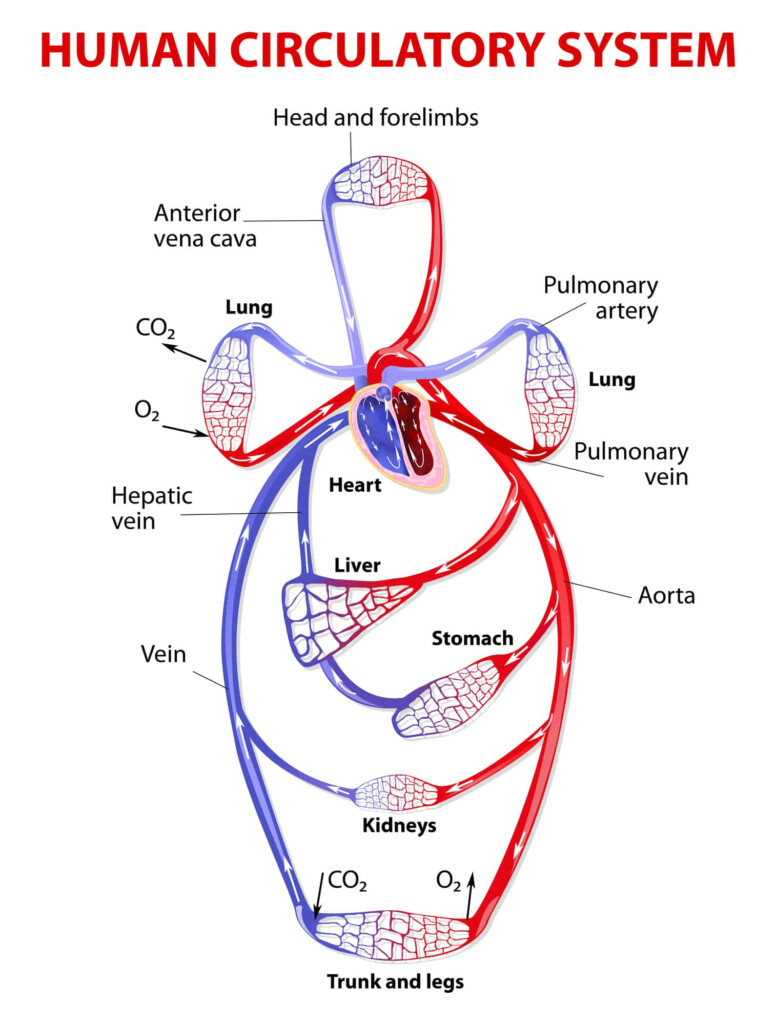Arterial circulation is the first step in the circulation of blood flow chart. Oxygen-rich blood is pumped from the heart through the arteries to the rest of the body. The main artery that carries blood away from the heart is the aorta. From the aorta, blood is distributed through smaller arteries to various tissues and organs. As blood travels through the arteries, it supplies oxygen and nutrients to cells and removes waste products.
After delivering oxygen and nutrients to the cells, blood returns to the heart through the veins in a process known as venous circulation. Veins carry deoxygenated blood back to the heart, where it is then pumped to the lungs for reoxygenation. The largest vein in the body is the vena cava, which collects blood from the upper and lower body and returns it to the heart. Venous circulation plays a crucial role in removing waste products from the body.
Circulation Of Blood Flow Chart
Capillary Exchange
Capillary exchange is the final stage in the circulation of blood flow chart. Capillaries are tiny blood vessels that connect arteries and veins. They allow for the exchange of nutrients, oxygen, and waste products between the blood and surrounding tissues. Oxygen and nutrients are released from the blood into the tissues, while waste products are absorbed by the blood for removal from the body. Capillary exchange is essential for maintaining the balance of substances in the body.
